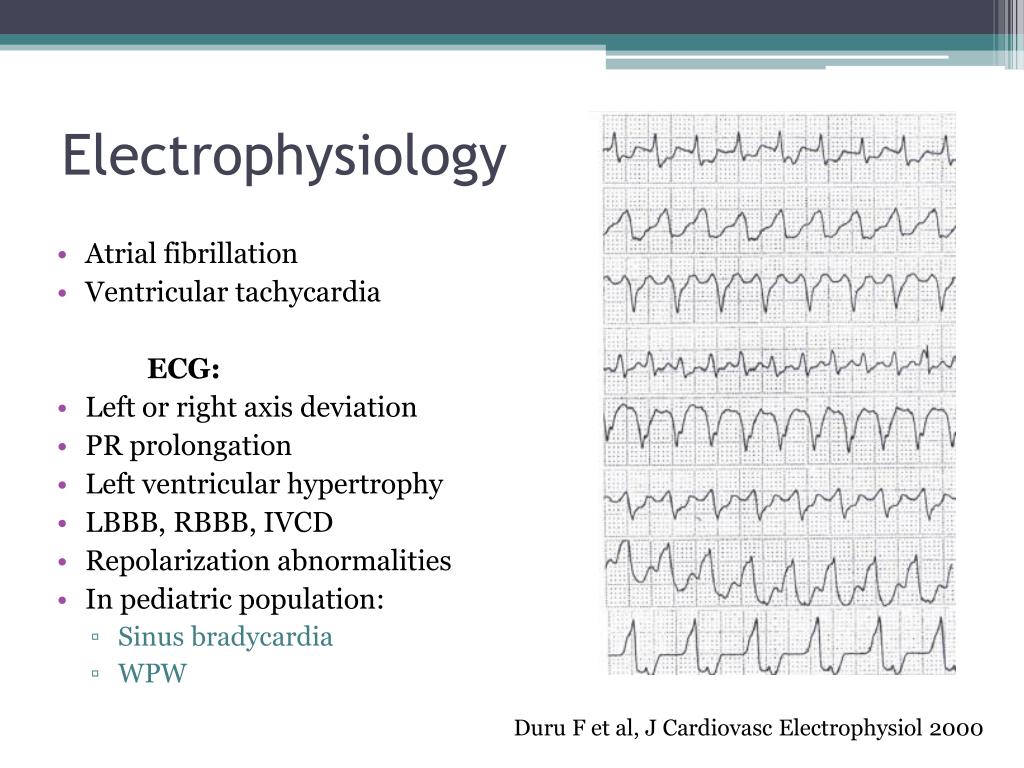

^ Petretto E, Sarwar R, Grieve I, Lu H, Kumaran MK, Muckett PJ, Mangion J, Schroen B, Benson M, Punjabi PP, Prasad SK, Pennell DJ, Kiesewetter C, Tasheva ES, Corpuz LM, Webb MD, Conrad GW, Kurtz TW, Kren V, Fischer J, Hubner N, Pinto YM, Pravenec M, Aitman TJ, Cook SA (May 2008)."Rationale and design of the SMART Heart study: A prediction model for left ventricular hypertrophy in hypertension". ^ Meijs MF, Bots ML, Vonken EJ, et al.^ "Ask the doctor: Left Ventricular Hypertrophy".^ a b Maron, Barry J Maron, Martin S ().Patients with LVH may have to participate in more complicated and precise diagnostic procedures, such as imaging, in situations in which a physician could otherwise give advice based on an ECG. For example, LVH causes a patient to have an irregular ECG. LVH may be a factor in determining treatment or diagnosis for other conditions. The enlargement is not permanent in all cases, and in some cases the growth can regress with the reduction of blood pressure.

Other voltage-based criteria for LVH include: Left axis deviation (QRS of −30° or more)ĭelayed intrinsicoid deflection in V 5 or V 6 (>0.05 sec) Negative terminal P mode in V 1 1 mm in depth and 0.04 sec in duration (indicates left atrial enlargement) ST-T vector opposite to QRS with digitalis.ST-T vector opposite to QRS without digitalis.The Romhilt-Estes point score system ("diagnostic" >5 points "probable" 4 points): The Cornell voltage criteria for the ECG diagnosis of LVH involve measurement of the sum of the R wave in lead aVL and the S wave in lead V 3. S in V 1 + R in V 5 or V 6 (whichever is larger) ≥ 35 mm (≥ 7 large squares).None of them are perfect, though by using multiple criteria sets, the sensitivity and specificity are increased. There are several sets of criteria used to diagnose LVH via electrocardiography. Left ventricle is at right in image, serially sectioned from apex to near base. Gross pathology of left ventricular hypertrophy. Average thickness of the left ventricle, with numbers given as 95% prediction interval for the short axis images at the mid-cavity level are: The thickness of the left ventricle as visualized on echocardiography correlates with its actual mass. Two dimensional echocardiography can produce images of the left ventricle. Echocardiography Left ventricular hypertrophy grading The electrocardiogram (ECG) often shows signs of increased voltage from the heart in individuals with LVH, so this is often used as a screening test to determine who should undergo further testing. The principal method to diagnose LVH is echocardiography, with which the thickness of the muscle of the heart can be measured. Īssociated genes include OGN, osteoglycin. Long-standing mitral insufficiency also leads to LVH as a compensatory mechanism. Primary disease of the muscle of the heart that cause LVH are known as hypertrophic cardiomyopathies, which can lead into heart failure. Ĭauses of increased afterload that can cause LVH include aortic stenosis, aortic insufficiency and hypertension. Disease processes that can cause LVH include any disease that increases the afterload that the heart has to contract against, and some primary diseases of the muscle of the heart. While LVH itself is not a disease, it is usually a marker for disease involving the heart. It is one aspect of ventricular remodeling. While ventricular hypertrophy occurs naturally as a reaction to aerobic exercise and strength training, it is most frequently referred to as a pathological reaction to cardiovascular disease, or high blood pressure.


 0 kommentar(er)
0 kommentar(er)
